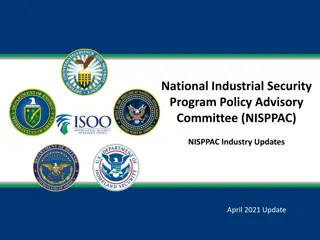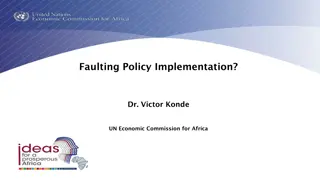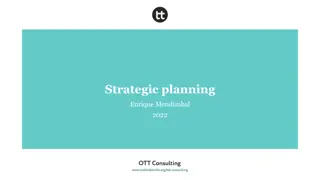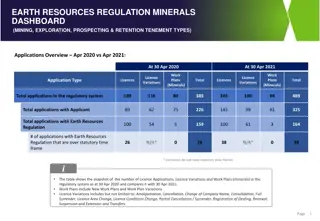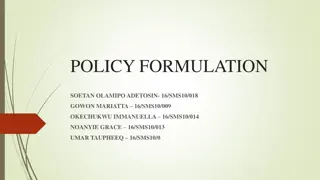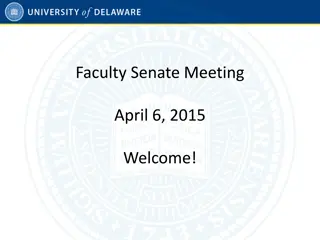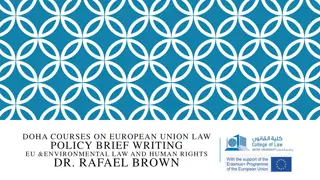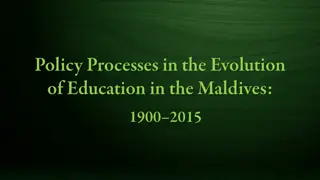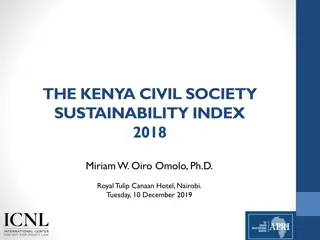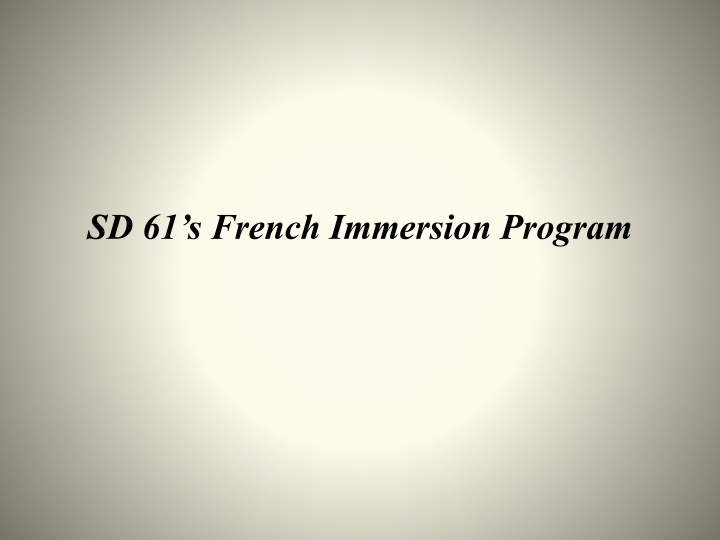
French Immersion Program Overview in SD.61 Victoria
"Explore the French Immersion program in SD.61 Victoria, tracing its history, goals, entry points, provincial comparisons, enrollment rates, and growth. Discover how this program enables students to achieve bilingualism and academic success." (Total characters: 274)
Download Presentation

Please find below an Image/Link to download the presentation.
The content on the website is provided AS IS for your information and personal use only. It may not be sold, licensed, or shared on other websites without obtaining consent from the author. If you encounter any issues during the download, it is possible that the publisher has removed the file from their server.
You are allowed to download the files provided on this website for personal or commercial use, subject to the condition that they are used lawfully. All files are the property of their respective owners.
The content on the website is provided AS IS for your information and personal use only. It may not be sold, licensed, or shared on other websites without obtaining consent from the author.
E N D
Presentation Transcript
A Brief History French Immersion started in Victoria in the 70 s at 2 schools with 2 Kindergarten classes per year French Immersion takes place in a dual track school setting Victoria has 18 dual track schools 9 elementary schools 5 middle schools 4 secondary schools Approximately 20% of students in SD 61 are enrolled in an immersion program as compared to a 6 8 % provincial average.
Program Goals and Objectives (as communicated by the Ministry of Education) The French Immersion Program enables students to: achieve levels of learning in all subject areas equivalent to the English Program; reach, by the end of Grade 4, a level in English Language Arts equivalent to students in the regular program; become functionally bilingual, that is to participate comfortably in French and English conversations; to be able to pursue further education appropriate to their abilities and interests, with French as the language of instruction; to be qualified for employment where the working language is French; gain insight into the common attitudes and values of French-speaking communities.
French Immersion Entry Points Kindergarten Grade 1 Grade 6 (Late Immersion) Note: Entry points into immersion are determined by the Ministry of Education
Provincial Comparators Not every school district in BC offers French Immersion There are 60 school districts in BC 20 Offer Early and Late FI programs 20 Only offer an Early FI program 6 Only offer a Late FI program Victoria has the largest French Immersion Program per student enrollment in BC
How does our participation rate compare? % French Immersion Enrollment Compared to Total Student Enrollment 2011 2012 Victoria 16% 17% 2013 20% 2014 20% BC Canada 7.3% 6.4% 7 8% 7 8% 7 8% SD 61 experienced approximately a 48% growth in our K enrollment from Sept 2009 to Sept 2014 Our FRIM enrollment comparators would be districts in PEI and N.B. who have huge francophone communities. (Ontario was at 9.1% in 2011)
Figure 1: Comparison of the 2010/2011 participation rates for French Immersion across British Columbia. (French Immersion Program Review School District No. 68 (Nanaimo- Ladysmith) The figure above was prepared in November 2011 by a consulting firm for SD 68. It shows participation rates in all BC school districts offering some form of FI program. It is noted that the participation rate per enrollment in SD 61 is the largest in the province and more than double the provincial average of 7%.
Total SD 61 French Immersion Enrollments 4000 3681 3500 3478 3448 3305 3140 3017 3000 2875 2741 2576 2500 2389 2184 2000 1944 Total District French Immersion Enrollments 1500 1000 500 0 French Immersion enrollment is 20% of total district enrollment for Sept 2014
Retention rates French Immersion retention rates from September 2013 to September 2014 by grade. The calculated percentages does not factor into account students leaving SD 61 or entering SD 61 for the first time. 2013 to 2014 % retention K 1 2 3 4 to to to to to 1 2 3 4 5 99% 90% 93% 92% 96% 5 to 6 91% (transition to middle school) 6 7 to to 7 8 94% 95% 83% (transition to high school) 8 to 9 9 10 11 to to to 10 11 12 97% 92% 98%
Late French Immersion SD 61 offers a Late FI program at all 5 dual track middle schools Grade 6 is the entry point to Late FI Students are grouped in grade 6 and 7 as a Late FI cohort Late FI students join the Early FI cohort in grade 8 By the end of the grade 8 year, Late FI students language ability is on par with the Early Immersion students SD 61 averages between 90 and 125 Late FI entries every year The district total of Late FI students averages between 180 and 250 students every year
How Much French will my child speak in the classroom? (the percentages below are approximations and are in accordance to Ministry guidelines) Grades French Instruction vs. English Instruction 100% French Kindergarten through to Grade 2 Grade 3 to Grade 5 80% French, 20% English Grade 6 to Grade 8 70 -80% French, 20 30% English Grade 9 to Grade 10 34 50% French, 50 66% English Grade 11 to Grade 12 up to 25% French, 75% or more English
Early French Immersion Pathways and Availability Elementary School Designated Middle School Designated Secondary School Marigold Shoreline Esquimalt High Macaulay Willows Lansdowne Oak Bay Margaret Jenkins Central Campus View Arbutus Doncaster Cedar Hill Reynolds Secondary Quadra Lansdowne Sir James Douglas Central Victoria High George Jay
S.J. Willis: Distributed Learning for French Immersion Students SD 61 is the only district in BC that offers French Immersion courses through a distributed learning model that count towards graduation with a Dual Dogwood SJ Willis offers the flexibility to SD 61 students wishing to pursue other programs in our high schools while still completing their Dual Dogwood S.J. Willis has enrolled students from across the province who can not otherwise complete their French Immersion studies in their prospective districts.
Registration Process Registration week (Jan 12th 16th) this occurs 2 weeks prior to regular Kindergarten registration Dual track schools have French immersion catchments determined by residential address Priorities for registration are established to help keep families closest to their catchment school School based draw when demand exceeds capacity. The draw provides every family with an equal opportunity to access the French Immersion Program
Teacher Recruitment and hiring Process TFI fluency assessment both practicum and prospective teachers Make a Future postings U Vic grads VIU grads SFU and UBC immersion cohorts PSC in French Immersion Member of Continuing Studies Advisory Committee (UVic) Making courses available as elective choices to B.Ed. Students - ability to graduate with a combined PSC certificate and B.Ed. 5 year Combined French Major and PDPP Information session for U Vic students at U Vic
Pro D Teacher mentorship Support after school workshops with LSA Vancouver Island Language Educators Consortium (VILEC) Greater Victoria Language Consortium (GVLC) Tri-district consortium Tri-district French Conference BC Language Coordination Consortium (BCLCA conference) Guest presenters Modern Languages Enhancing Learning Grant Learning Initiatives (approximately 30% of teacher participation in all LI projects and after school offerings are French Immersion teachers)
French Connections Vancouver Island Language Educators Consortium (VILEC) Greater Victoria Language Consortium (GVLC) BC Language Coordination Association SD 61 Immersion LSA (l APIV) Canadian Parents for French (CPF) Francophone Society of Victoria Odysey Program (Federal French Monitors) French Advisory Committee (FAC) Learning Initiatives University of Victoria (Faculty of Education, Continuing Studies, and French)
English Language Learners (ELL) SD 61 has 1634 ELL students 1129 elementary ELL students 236 middle ELL students 269 secondary ELL students SD 61 also has 98 non-fundable ELL students who also receive ELL supports
Eligibility Criteria for ELL Students are eligible for funding for up to five school years and must receive the service consistently throughout the ten months of each school year. For a student to be reported in the ELL program so the district may receive supplemental funding, all of the following conditions must be met and documented: (1) An annual assessment of English language proficiency has determined that the student s use of English is sufficiently different from standard English that she or he is identified as requiring specialized services to adjust to the linguistic and cultural environment in order to achieve his or her individual potential and be successful in the British Columbia school system; (2) An annual instructional plan is designed to meet the needs of the student;
Eligibility Criteria for ELL (3) Specialized ELL services are provided for each student, documented in a list or schedule; (4) Progress in the acquisition of English is reported to parents in regular reporting periods, and evidence of reports is documented; (5) An ELL specialist is involved in planning and delivering services; and (6) Additional ELL services must be provided and may include individual and/or small group instruction, pull-out services, and/or additional services provided within the regular classroom environment. Where the additional services provided to the student are adaptations within the regular classroom, there must be documentation of support provided that is specifically designed to address linguistic needs of each student identified in the assessment referenced above.
Settlement Workers in Schools (SWIS) Partnership with the Inter-Cultural Association of Greater Victoria (ICA) The SWIS team: Jean McCrae Sabine Lehr Executive Director Immigrant Services Manager 2 SWIS worker and 1 SWIS youth worker provide additional supports to SD 61 newcomer families Gita John-Iyam - SWIS Worker (Tamil, Telugu, Hindi) Lisa Wang SWIS Worker (Mandarin, Basic Cantonese) Kay Otani SWIS Youth Worker (Japanese) ICA is also able to support CIC eligible families in many other languages.
Other Partnerships and Commitments - Victoria Immigrant and Refugee Centre Society (VIRCS) - AMSSA (Affiliation of Multicultural Societies and Services Agencies of BC) and CIC - BC Black History Awareness Society - Victoria Holocaust Remembrance and Education Society Annual Holocaust Symposium - South Island Dispute Resolution Centre - Victoria, and Saanich Police Youth for Change and Inclusion (YCI Camps) - ELL Metro Consortium
- Translations when necessary for example First peoples principles of learning poster and Power of 10 for immersion teachers - Kindergarten Registration - Kindergarten and K-12 Transfer Process - Parent Information Evenings - Core French and all other languages offered - Ministry reporting - Teacher Qualifications for French Immersion, Core French, ELL, and other second languages


